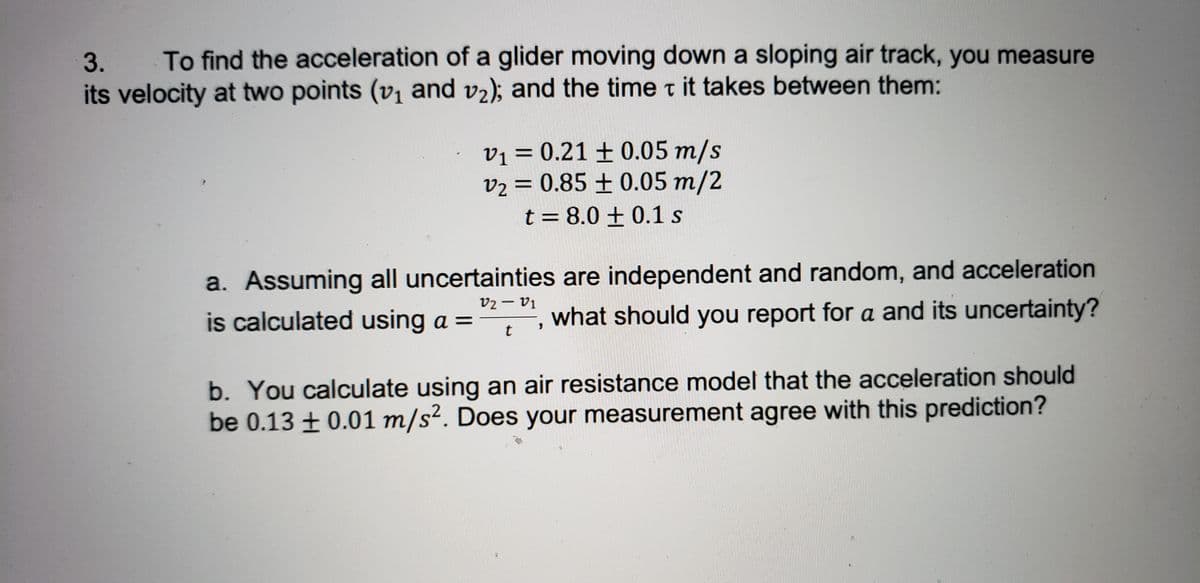To find the acceleration of a glider moving down a sloping air track, you measure its velocity at two points (v1 and v2); and the time t it takes between them: 3. v1 = 0.21 ± 0.05 m/s v2 = 0.85 + 0.05 m/2 t = 8.0 ± 0.1 s a. Assuming all uncertainties are independent and random, and acceleration is calculated using a = vz – Vi what should you report for a and its uncertainty?
To find the acceleration of a glider moving down a sloping air track, you measure its velocity at two points (v1 and v2); and the time t it takes between them: 3. v1 = 0.21 ± 0.05 m/s v2 = 0.85 + 0.05 m/2 t = 8.0 ± 0.1 s a. Assuming all uncertainties are independent and random, and acceleration is calculated using a = vz – Vi what should you report for a and its uncertainty?
Related questions
Question
3. Please help me answer parts A. and B. of this question.

Transcribed Image Text:To find the acceleration of a glider moving down a sloping air track, you measure
its velocity at two points (v, and v2); and the time t it takes between them:
3.
v1 = 0.21 ± 0.05 m/s
v2 = 0.85 ± 0.05 m/2
t = 8.0 ± 0.1 s
a. Assuming all uncertainties are independent and random, and acceleration
is calculated using a =
v2- V1
what should you report for a and its uncertainty?
t
b. You calculate using an air resistance model that the acceleration should
be 0.13 ± 0.01 m/s². Does your measurement agree with this prediction?
Expert Solution
This question has been solved!
Explore an expertly crafted, step-by-step solution for a thorough understanding of key concepts.
This is a popular solution!
Trending now
This is a popular solution!
Step by step
Solved in 2 steps with 3 images
